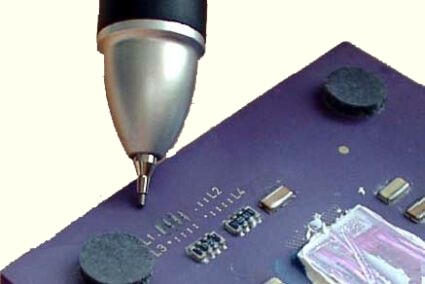Do-It-Yourself PC System: CPU & Motherboard
Modification Instructions: L1 Bridges Must Be Closed
As far as the Duron or Thunderbird is concerned, there is only one thing to check: all contacts of the L1 bridges must be closed. Our experience shows that some AMD processors are already shipped with closed L1 bridges. However, if this is not the case the contacts must be closed carefully using a lead pencil. When closing the contacts manually, it is important to make sure not to create any connection between the individual bridges.
The first picture below shows a Athlon that was manufactured with open L1 contact bridges that were manually closed afterwards.
Case And Power Supply: 300 Watts Are A Must!
First of all, we need a suitable casing for our do-it-yourself PC. Housings found at computer retailers are usually rather badly designed and only differ in their size. Quite often we encounter cheap-looking metal casings equipped with different plastic front panels. A well-designed casing suitable for easy servicing is hard to find and expensive. Considering our PC is usually hidden under the desk during use, we paid less attention to its looks. An important aspect of any case purchase is the quality of its built-in power supply. To be on the safe side, we recommend a model with at least 300 Watts. This allows the integration of many components and drives in the system. Quite often, frequent crashes of a given system are due to an undersized power supply.
Get Tom's Hardware's best news and in-depth reviews, straight to your inbox.
Current page: Modification Instructions: L1 Bridges Must Be Closed
Prev Page Ideal CPU: AMD Athlon 800 Next Page Step By Step: Assembling The PC-
God bless you Tom for this wonderful project.........it is indeed amazing.pls can we chat....chucklesReply

